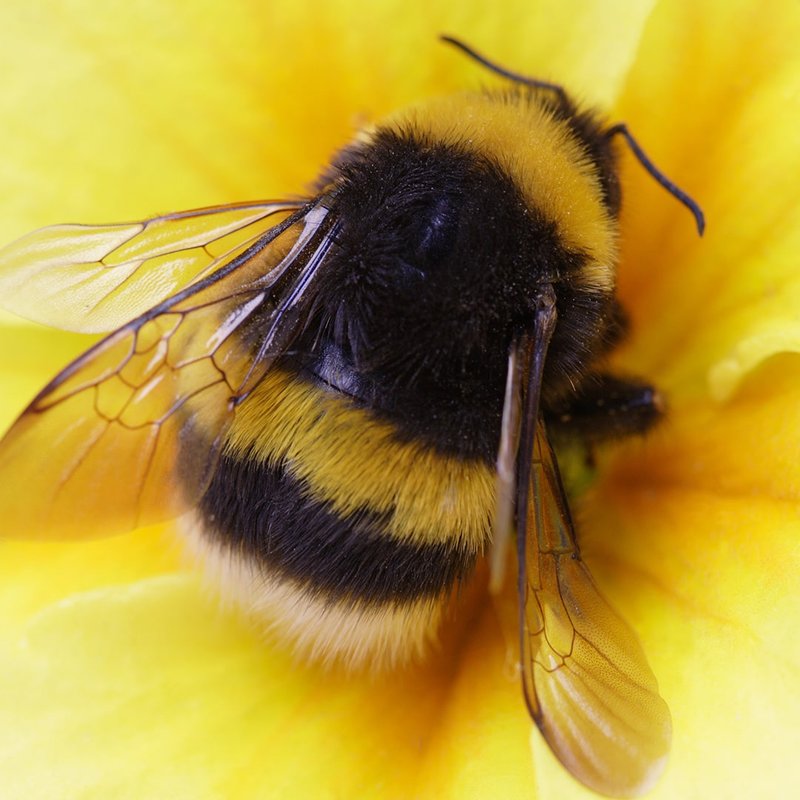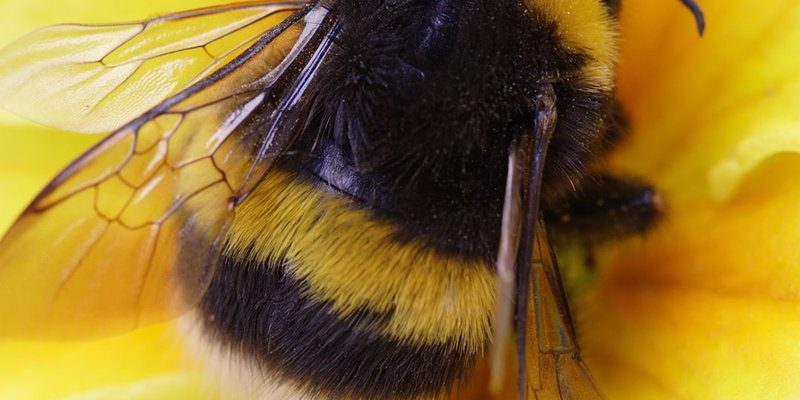
Let me explain; identifying a bumblebee is like recognizing your friend in a crowded coffee shop. You look for familiar traits – their unique colors, size, and behavior. You might even compare them to other friends (or insects, in this case). Understanding these differences not only makes you a better observer of nature but also helps in contributing to its protection.
In this guide, we’ll navigate the major features of bumblebees, breaking down how you can spot them easily. Whether you’re a garden enthusiast hoping to attract more pollinators or just someone who loves to learn about the buzzing world around us, you’re in the right place!
Know the Basics: What is a Bumblebee?
Bumblebees belong to the family Apidae and are part of the genus Bombus. They are distinct from honeybees and other types of bees, thanks to their larger size and hairy bodies. Most bumblebees are generally about 0.5 to 2 inches long, and you can often see them hovering around flowers.
What makes them especially interesting is their social structure. Bumblebees live in colonies that can range from 50 to over 400 individuals, unlike honeybees that can have thousands. Each spring, a queen bumblebee emerges from hibernation to start a new colony, laying eggs and raising her workers. Isn’t it amazing how they work together as a team?
Identifying a bumblebee starts with appreciating these basic traits. When you spot one in your garden, think of it as more than just a bee – it’s a little community in action!
Look for Their Unique Colors
One of the easiest ways to identify a bumblebee is through their vibrant color patterns. Most bumblebees exhibit bright yellow and black stripes, which are not just pretty but serve as a warning to predators about their potential sting. Depending on the species, there may also be orange or white bands.
For example, the Common Carder Bumblebee has a ginger-orange body, while the Tree Bumblebee sports a more distinctive black and yellow look. Knowing which colors to look for can help you differentiate between various species.
When you see a bumblebee, take a moment to observe its coloring. This can lead to some fascinating discoveries. Are you seeing a yellow stripy bee with a round body? Then that’s likely your bumblebee!
Observe Their Size and Shape
Bumblebees are often described as stocky and furry, more so than other bees like honeybees, which are slimmer. Their rounder body shape gives them that cute, plump appearance, and it’s one of the telltale signs you’re looking at a bumblebee.
Their wings are also somewhat larger in proportion to their bodies. When these little guys take flight, they create a unique buzzing sound that can fill the air around flowers. It’s like a tiny orchestra at work.
Keep an eye out for how they move too! Bumblebees tend to be less graceful than some other pollinators. They’ll often bounce from flower to flower, and you might notice them spending more time on a single bloom. This not only gives you a chance to admire their fuzzy bodies but helps you recognize them even better.
Check Their Behavior
Bumblebees exhibit some interesting behaviors that can help you identify them. One of the most prominent features is their foraging style. Unlike honeybees, which can be picky, bumblebees are more eclectic in their flower choices.
You might spot them visiting a variety of flowers, from lavender to daisies. Often, they’ll dive deep into blooms, gathering pollen and nectar with their legs and tongues. It’s like watching a little chef preparing a meal!
Also, watch how they interact with their surroundings. Bumblebees are usually not aggressive but can be territorial. If you get too close to their nesting area, you might see them buzzing around you as if to say, “Hey, this is my space!” Just remember to keep a respectful distance!
Understand Their Life Cycle
Understanding the life cycle of bumblebees can also help you identify them at different times of the year. A queen bumblebee starts the season by emerging from hibernation in early spring. As they search for food, you may notice them buzzing around gardens and parks.
Once the queen finds a suitable location, she builds a nest, often hidden underground or in old mouse holes. She lays eggs, which develop into worker bees by mid-summer. This is when you’ll see those fuzzy, busy helpers darting around flowers, gathering pollen in earnest.
By late summer or early autumn, new queens are produced, ready to find a safe place to hibernate as the old colony dies off. Recognizing these stages can give you a clearer picture of how bumblebees fit into the seasonal cycle.
Identifying Common Species of Bumblebees
There are about 250 species of bumblebees worldwide, but some are more common in certain regions. Here’s a brief guide to a few you might encounter:
- Buff Tailed Bumblebee: Recognizable by its buff-colored tail and black body, this species is prevalent in gardens.
- Red Tailed Bumblebee: Known for its striking orange-red tail, it’s often found in woodland areas.
- Early Bumblebee: One of the first bees to appear in spring, it has a more yellow and black appearance.
- Garden Bumblebee: A common garden visitor, with yellow bands and black markings; it loves to pollinate various flowers.
Knowing these species helps you appreciate the diversity of bumblebees in your area. Next time you spot one, you might just be able to name it!
Why Bumblebee Identification Matters
Identifying bumblebees goes beyond mere curiosity; it plays a vital role in conservation efforts. Bumblebees are crucial for pollinating many food crops and wild plants, and their declining populations indicate environmental issues. By becoming a bumblebee detective, you can contribute to tracking their populations and health.
You might wonder how you can help. Start by planting native flowers that attract bumblebees and avoiding pesticides. Participating in local wildlife surveys or simply sharing your findings with friends can raise awareness about their importance in our ecosystems.
Being able to identify bumblebees brings a new level of appreciation for these little workers. They buzz around doing their job, and recognizing them helps ensure they continue to thrive in our gardens and fields.
In summary, identifying bumblebees can be an enjoyable and rewarding activity. With their unique colors, sizes, and behaviors, it’s easier than ever to spot them. Plus, by understanding their life cycles and different species, you add to your knowledge and help protect these vital pollinators.
So next time you see one buzzing around, take a moment to observe—not just to identify, but to appreciate the role they play in our world. Happy bee watching!

